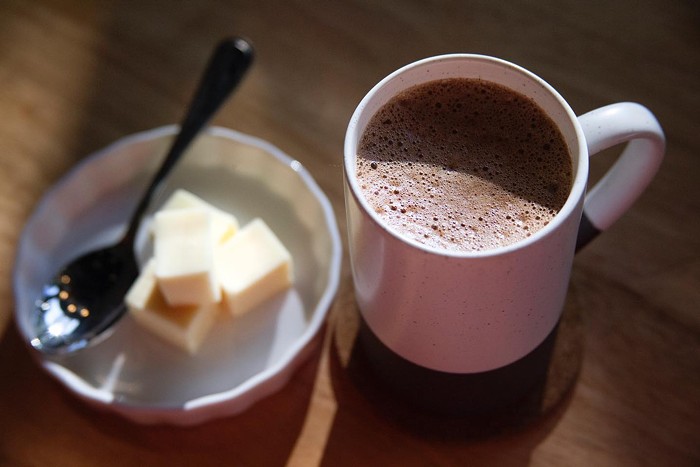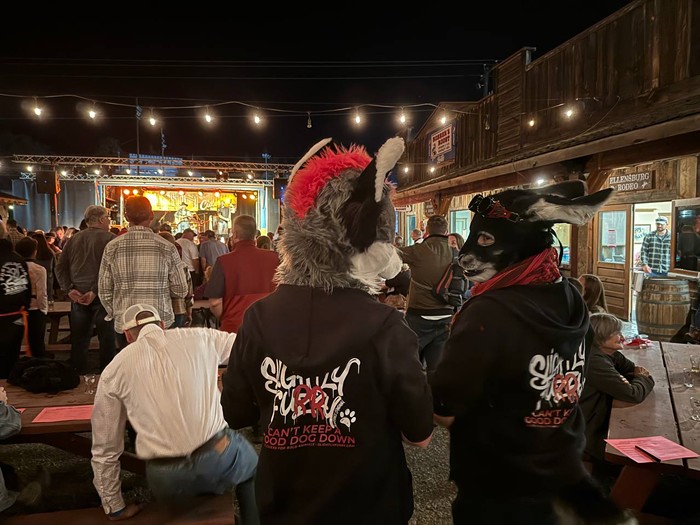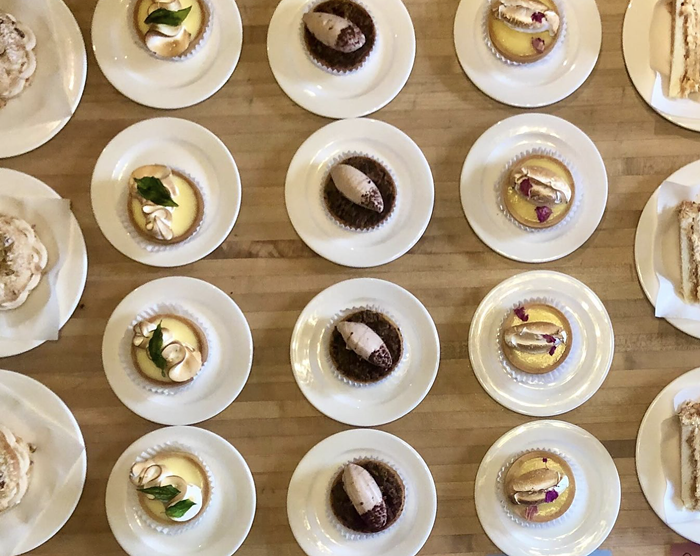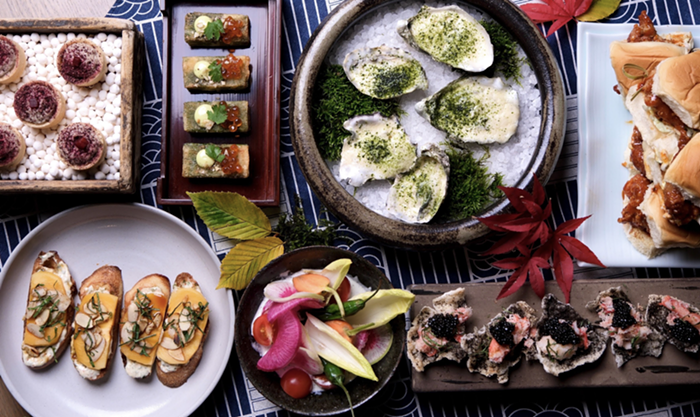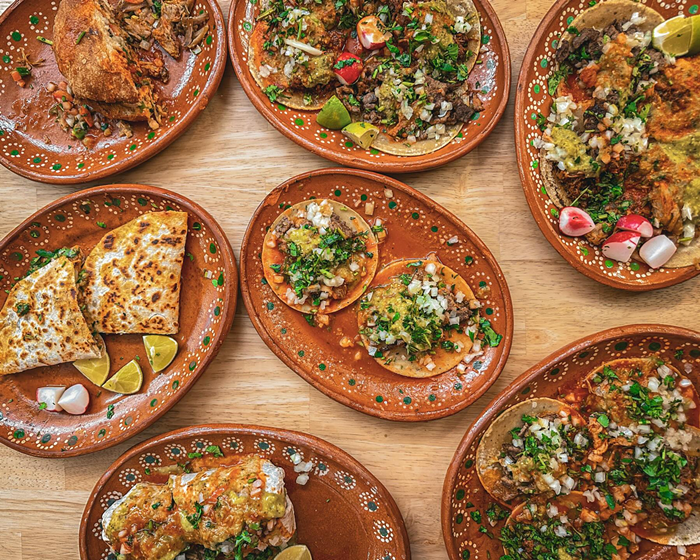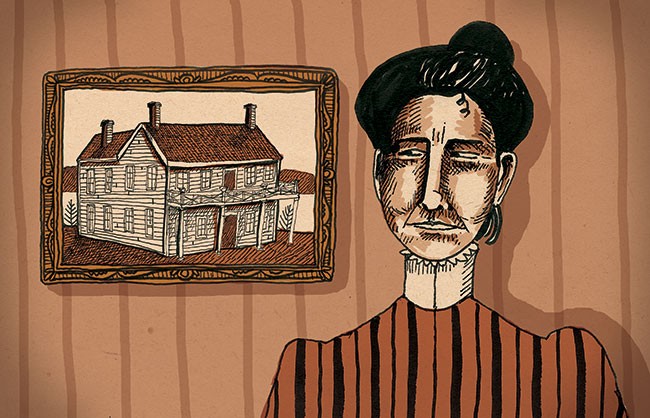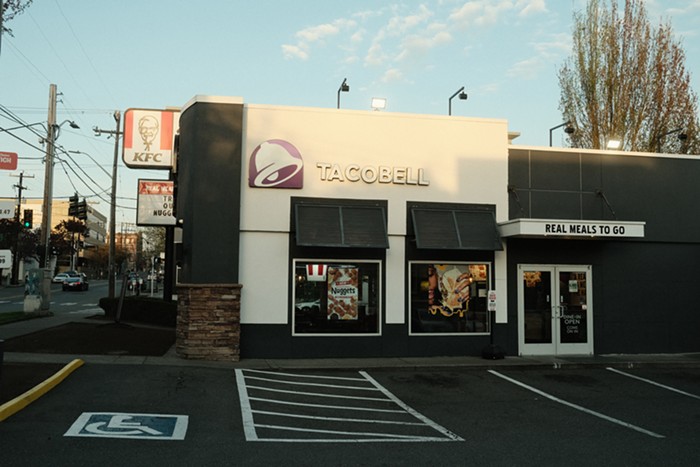At Eric Johnson and Seth Hammond's new bar next to Stateside, Foreign National, cocktails play with the theme of East meets West, or more accurately, the East through a foreigner's eyes. There is the classic Singapore Sling, an Expat Punch with passion fruit juice and Taittinger, and a Long Thailand Iced Tea, with rye and brandy and rums and actual (Thai) tea. Johnson, who grew up in Long Island but has family in Washington, is a former expat himself—a French-trained chef who spent eight years in China and opened French restaurant Jean-Georges in Shanghai.
Johnson wanted Foreign National to resemble "more what Asia really looks like" versus just looking Asian-inspired—more like the old tucked-away bars he'd seen in Tokyo, Hong Kong, and Saigon that haven't changed much over the years. Those places must look like gorgeous 1970s-era cocktail lounges, because that's what Foreign National resembles. Designed by Callie Meyer, the bar could be straight out of a scene in Scarface: A curtain of metal chains near the door blocks out the sunlight and adds to the clandestine feel, leather banquettes line walls covered in striking orchid-pink vintage wallpaper, and a gorgeous brass semi-circle-shaped back bar with distressed mirrors holds the liquor. Asians must also like track lighting and disco balls, because they have them here.
But self-consciously adopting a cuisine you're not born into can force anyone into a defensive role. "I'm not French, but nobody would blink an eye if I did open a French restaurant, right?" Johnson told Vice a few months back in an interview for their food site, Munchies. The story, titled "Why This Chef Is Taking Vietnamese Food to Another Level in Seattle," raised several questions around appropriation, authenticity, and value.
In the piece, he caught heat for comments about restaurants that served cheap pho. "Sure, you can get a $6 bowl of pho, but that broth has most likely not even been in the same room as a beef bone. The math simply doesn't work," he said. Besides, he explained, it's "a really socially and economically ignorant thing to think" that Vietnamese food should be cheap.
French-trained chefs opening Asian restaurants and bars is not new; it's been going on for more than 20 years, at least since Jean-Georges Vongerichten opened his French-Thai restaurant Vong in 1992. But often these French-trained chefs receive more excessive, effusive praise than immigrant restaurateurs.
"As a general rule," Eater New York senior critic Robert Sietsema says, "the importance of French cuisine is vastly overrated. There are other cuisines as complicated, as adept, as broad ranging as French cuisine." (For his part, Johnson agrees, calling Thai, in terms of flavor, "the most complex.")
Like other French-trained chefs, Johnson has been the recipient of many accolades from the food press. Reviews of Stateside invoke Johnson's years working with Daniel Boulud and Vongerichten like he was anointed from on high. Seattle Met thrilled that the "big-deal chef" came out from the kitchen to ask diners about their creamsicles. "Eric Johnson could have started a restaurant just about anywhere," gushes Eater Seattle, "but he chose Capitol Hill."
You half expect the man to descend from his Michelin-starred mount bearing some of Foreign National's curry puffs.
For Johnson, the price of a bowl of pho or the cost of a Singapore Sling isn't classicism but simple economics. "I know that a $6 bowl of pho is made from powder," he tells me in an interview. "I don't have a problem with that, and it's not throwing anybody under the bus. It is what it is."
Indeed, Pho Bac co-owner Yenvy Pham says it would be hard for a newcomer in Seattle to charge $6 for a bowl of pho. At her two restaurants in the International District and the Denny Triangle, they charge $8 for the smaller bowl of pho; the soup takes 10 hours to make and uses about 20 pounds of beef knuckles and marrowbones for every five gallons. "The profit margins of any food are very low. For us, we're very lucky, my parents got into the market back in the '80s when real estate was a lot cheaper."
But there's still something unsavory about the elevation by critics and patrons of West over East. "You're willing to pay $13 to $14 for a pastrami sandwich," Andrea Nguyen, author of the popular blog Viet World Kitchen and James Beard Award–nominated cookbook Into the Vietnamese Kitchen, says. "Why aren't you willing to pay that much for a banh mi? There's something weird about that."
At Foreign National, most bar snacks are a good deal at $4 to $9, but cocktails run $12 to $15. (Medium to large dishes at Stateside range from $14 to $28.) Patrons can down boilermakers of Filipino lager and mezcal ($13) while nibbling on re-creations of beloved Southeast Asian snacks like chicken curry puffs ($5) and fermented pork and sticky-rice sausages ($7), or fun East/West experiments like a banana split with black sticky rice and—dear God in heaven above—whipped coconut cream (worth every bit of the $7).
Of course, a restaurant is not just about the cuisine but also about the experience and how much you're willing to pay for it—from the decor, to the prime location, to costs we don't always consider, like the PR efforts that informed the press that brought us there. That said, restaurants aren't created in a vacuum where colonial history and race and well-entrenched bias don't play a part; they are reflections of our culture and a response to what people have come to expect—from both a Boulud-trained chef and an immigrant restaurateur in Little Saigon. It's worth keeping in mind, whether you're eating $6 pho in the ID or sipping $15 craft cocktails at a hole-in-the-wall-inspired bar.
"We've priced it low," Nguyen says of Asian restaurant food. But if the cost of something is too low, she says, you have to ask yourself why. ![]()

